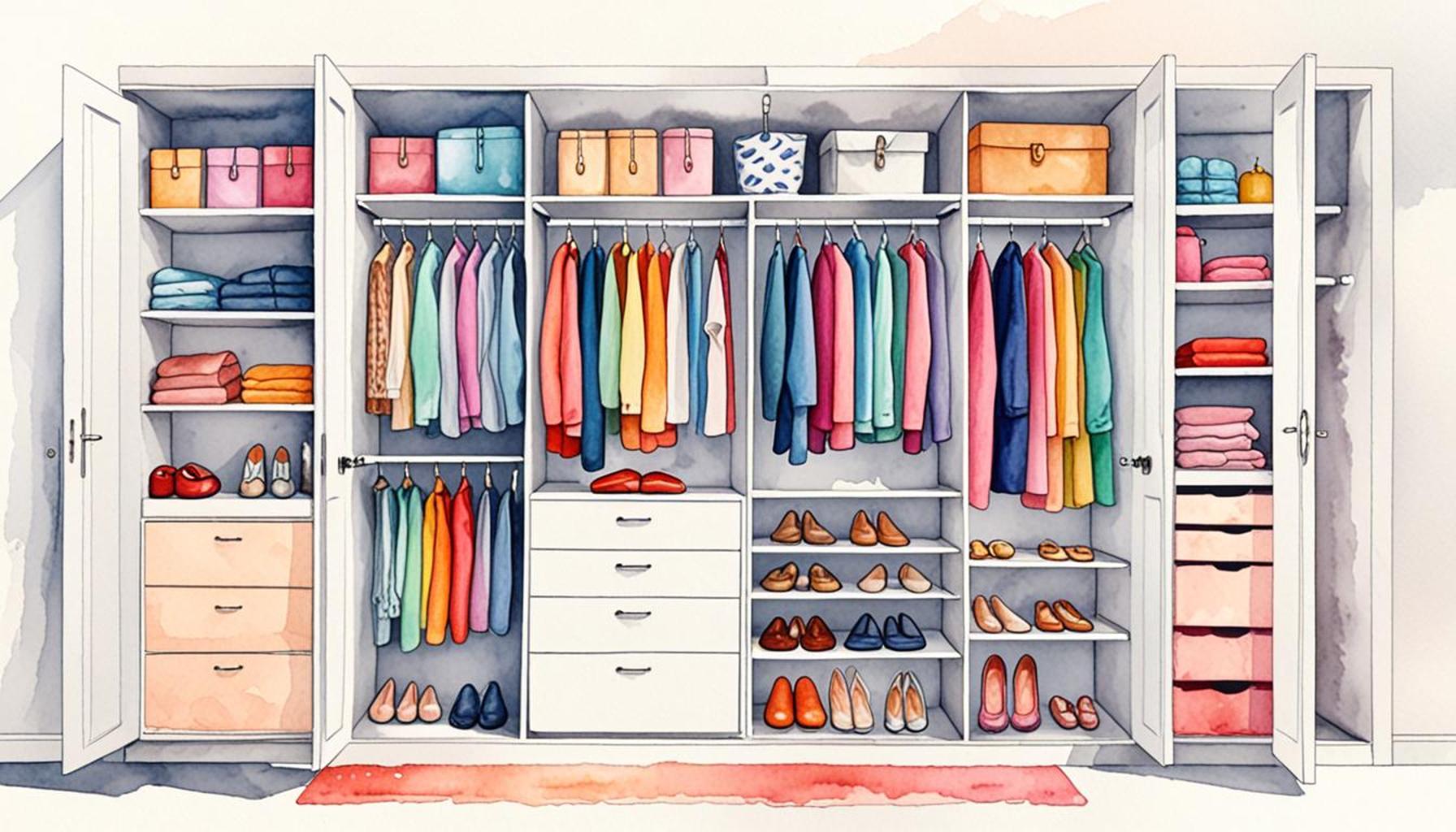Inspiring Workspaces: Integrating Minimalism and Ergonomics to Boost Creativity

Creating Space for Success Through Design
In an era defined by relentless pace and constant connectivity, the environments in which we work significantly influence our productivity, creativity, and overall happiness. The amalgamation of minimalist design and ergonomic principles is essential in establishing inspiring workspaces that not only foster efficiency but also enhance well-being.
An inspiring workspace is marked by its key features that cater to both form and function:
- Decluttered surfaces: Minimalism thrives on simplicity. By reducing visual clutter, a workspace transforms into a sanctuary for thought and creativity. This can be as simple as implementing cable management systems to hide unsightly cords or investing in storage solutions that keep unnecessary items at bay.
- Adjustable furniture: Ergonomics is about personalization. Height-adjustable desks and chairs that mimic the natural posture of the body can drastically enhance comfort, allowing individuals to alternate between sitting and standing. The Steelcase Gesture chair, for example, adapts to various sitting styles, making it an ideal choice for diverse work habits.
- Natural light: Ample access to daylight has been shown to increase mood and energy levels. Integrating large windows or strategically placed mirrors can maximize light flow into a workspace. Research indicates that employees exposed to natural light experience a 51% drop in eye strain, headaches, and blurred vision, leading to greater productivity.
- Green elements: Incorporating plants can have a profound effect on a workspace’s atmosphere. Studies suggest that greenery not only beautifies an area but also contributes to improved air quality, reducing the levels of harmful toxins. Adding easy-to-care-for plants, such as snake plants or pothos, can create a more vibrant environment.
Research indicates that workspaces designed with an emphasis on minimalism and ergonomics can significantly enhance creativity and performance. For instance, tech giants like Google and Apple are known to implement these principles, resulting in engaging work environments. Employees at these companies often report heightened job satisfaction, decreased levels of stress, and an increase in innovative thinking. Notably, Google’s offices often feature open spaces adorned with creative artwork and easy access to rest areas, embodying the principles discussed.
The journey toward the ideal workspace is ongoing and fluid. By understanding the connection between minimalism and ergonomics, individuals and organizations can create environments that are not just functional but also serve as a wellspring of inspiration and productivity that fuels success.
DISCOVER MORE: Click here for essential organizing tips

The Synergy of Minimalism and Ergonomics
As the lines between work and personal life continue to blur, individuals are increasingly seeking workspaces that not only support their professional demands but also nurture their creativity. The integration of minimalism and ergonomics stands at the forefront of this transformation, creating environments that inspire innovation and enhance productivity.
Minimalism focuses on the idea of “less is more.” In a workplace setting, this translates to a thoughtful selection of furniture and decor, aiming to eliminate distractions while promoting clear thought. Environments that exhibit a clean aesthetic can help employees concentrate better. For example, a study by Princeton University demonstrated that people exposed to clutter perform worse on tasks compared to those in tidy spaces. This finding underscores the necessity of eliminating visual chaos to foster a creative mindset.
Ergonomics, on the other hand, is the science of designing workspaces that fit the physical needs of individuals. When a workspace is tailored to accommodate the user’s body, it leads to improved comfort, reduced strain, and ultimately, enhanced productivity. Here are some key aspects that highlight the importance of ergonomics in inspiring workspaces:
- Posture Support: Proper posture is crucial for avoiding discomfort and long-term health issues. Ergonomic chairs that support the lower back and promote a natural spine alignment can reduce fatigue during long hours of work.
- Workspace Flexibility: Height-adjustable desks enable employees to alternate between sitting and standing. This not only caters to personal preferences but also encourages movement, keeping creativity flowing throughout the day.
- Screen Placement: Monitors should be positioned at eye level to prevent neck strain. Proper screen height not only enhances comfort but also allows for better focus on tasks at hand.
The fusion of these two design philosophies can be seen in many modern offices across the United States. For instance, companies like Microsoft have invested in ergonomically designed workstations that also embrace minimalist design principles. Such environments empower employees to express themselves while pursuing their work tasks effectively. Furthermore, a report from Future Workplace indicated that 91% of employees performed better in well-designed workspaces, reinforcing the importance of thoughtful design in fostering creativity.
To further inspire creativity within the workspace, organizations are realizing the importance of collaborative zones that mirror the minimalist approach yet provide an ergonomic touch. These areas feature comfortable seating, bright colors, and ample whiteboard space to encourage brainstorming sessions while ensuring users remain physically supported during group activities. The synergy between minimalism and ergonomics indeed lays the foundation for a workspace that thrives on creativity, innovation, and efficiency.
As modern work environments evolve, the combination of minimalism and ergonomics emerges as a powerful driver in enhancing creativity. When we talk about minimalist design, we refer to spaces that prioritize simple forms and decluttered settings. These environments can significantly impact cognitive function, allowing for increased focus and reduced stress. The elimination of visual chaos often leads to a more stimulating atmosphere that fosters innovative thinking.
On the other hand, ergonomic considerations play a crucial role in supporting physical well-being. By optimizing furniture design—such as using adjustable desks and supportive chairs—workspaces can reduce fatigue and discomfort. This ensures that creativity is not stifled by physical distractions. Research indicates that comfortable environments lead to longer periods of productive work, which in turn can spark new ideas and ingenious solutions.
| Category | Details |
|---|---|
| Minimalism | Promotes focus and reduces stress by eliminating clutter. |
| Ergonomics | Enhances comfort and reduces physical strain, enabling creativity. |
Integrating these two elements creates a harmonious workspace that can adapt to various tasks, making it a canvas for creativity. Studies also indicate that people who work in environments that honor both minimalism and ergonomic principles report higher job satisfaction and an eagerness to engage in creative problem-solving. The thoughtful combination of aesthetics and functionality is key to unlocking hidden potential in any workspace, beckoning a new age of innovative collaboration.
EXPLORE MORE: Click here to discover the blend of minimalism and interior design
Crafting Spaces that Inspire: The Role of Design Elements
Integrated designs that fuse minimalism with ergonomics play a vital role in creating inspiring workspaces. Beyond furniture and layout, the subtle nuances of design elements can significantly impact employee well-being and creativity. Light, color, and nature are three essential components that, when applied thoughtfully, enhance the effectiveness of a workspace.
Natural Light has been linked to various positive outcomes in the workplace, including increased mood, focus, and overall productivity. According to the *American Society of Interior Designers*, access to natural light can increase employee productivity by up to 13%. Incorporating large windows or skylights in office design allows for ample sunlight and can reduce the need for artificial lighting, leading to a more energetic and alert workforce. Additionally, the strategic use of light in a minimalist setting—creating open, bright areas—can encourage a feeling of spaciousness, further encouraging free thought and collaboration.
Color psychology is another critical aspect to consider when designing workspaces. Different colors evoke various emotions and responses. For example, blue hues are known to promote tranquility and focus, while green is associated with creativity and growth. Employers are increasingly experimenting with color schemes that align with their company culture and desired outcomes. A minimalist approach may apply a simple palette, allowing these color accents to shine through without overwhelming the senses—encouraging clarity and creative thought instead.
Moreover, integrating biophilic design can tremendously enrich the workspace environment. This concept revolves around incorporating elements of nature into design. Recent studies suggest that workplaces featuring plants and natural elements reduce stress and enhance creativity. Incorporating green walls, potted plants, or other natural elements into minimalist decor can bridge the gap between ergonomic function and artistic inspiration. Offices like Amazon’s Spheres in Seattle exemplify this trend, serving as dynamic ecosystems that foster both relaxation and creativity.
Additionally, technology plays a significant role in shaping modern workspaces while adhering to both minimalism and ergonomics. The advent of smart office solutions allows for seamless integration of technology into the workspace, enabling users to manage environmental conditions with ease. For instance, employees can control lighting, temperature, and even their desk settings through user-friendly apps, enhancing comfort and suitability for their unique working styles. Integrating technology in this manner not only streamlines operations but also maintains an uncluttered environment, keeping distractions at bay.
On the front of acoustics, designing spaces with sound management in mind is equally crucial. Minimalist workplaces that adopt ergonomic principles often feature sound-absorbing materials, creating serene zones that promote concentration while minimizing distractions. This thoughtful design caters to different working styles, supporting those who thrive in silence and those who excel with soft ambient sounds, ultimately cultivating a more inclusive and creative workspace.
Each of these elements contributes to demonstrating the impact of design on workplace functionality. By skillfully blending minimalism and ergonomics through light, color, nature, technology, and acoustics, modern workspaces can evolve from mere production centers into inspiring environments that enhance creativity, foster collaboration, and engage the human spirit. As companies invest in innovative designs following these principles, the landscape of workspaces is undoubtedly changing, paying dividends in both productivity and employee satisfaction.
DISCOVER MORE: Click here to enhance your understanding
Conclusion: The Future of Workspaces
The evolution of work environments toward a more minimalist and ergonomic approach signals a pivotal shift in how creativity and productivity are fostered. By thoughtfully integrating natural light, engaging color schemes, biophilic elements, advanced technology, and sound management, companies can create spaces that not only boost morale but challenge conventional notions about where work gets done. The research speaks volumes, indicating that natural light can enhance productivity by as much as 13%, and the calming effects of color psychology play a crucial role in employees’ emotional states.
Moreover, as workplaces increasingly adopt these design principles, they create a dynamic atmosphere that encourages collaboration and innovation. The emphasis on sound management and individual preferences ensures that every employee can thrive, irrespective of their working style. This is particularly vital in today’s fast-paced world, where flexibility and adaptability are paramount.
The intersection of minimalism and ergonomics is not merely an aesthetic choice; it is a strategic business initiative that has the potential to transform workspaces into inspiring arenas for creativity. Companies like Amazon, with their innovative designs, exemplify this change, paving the way for future endeavors in workspace design.
Looking forward, organizations that prioritize the well-being of their employees through these designs are likely to reap substantial benefits in terms of employee satisfaction, retention, and creativity. As the landscape of work continues to shift, now is the time to embrace the principles of integrated design, ensuring that inspiring workspaces become the norm rather than the exception.


